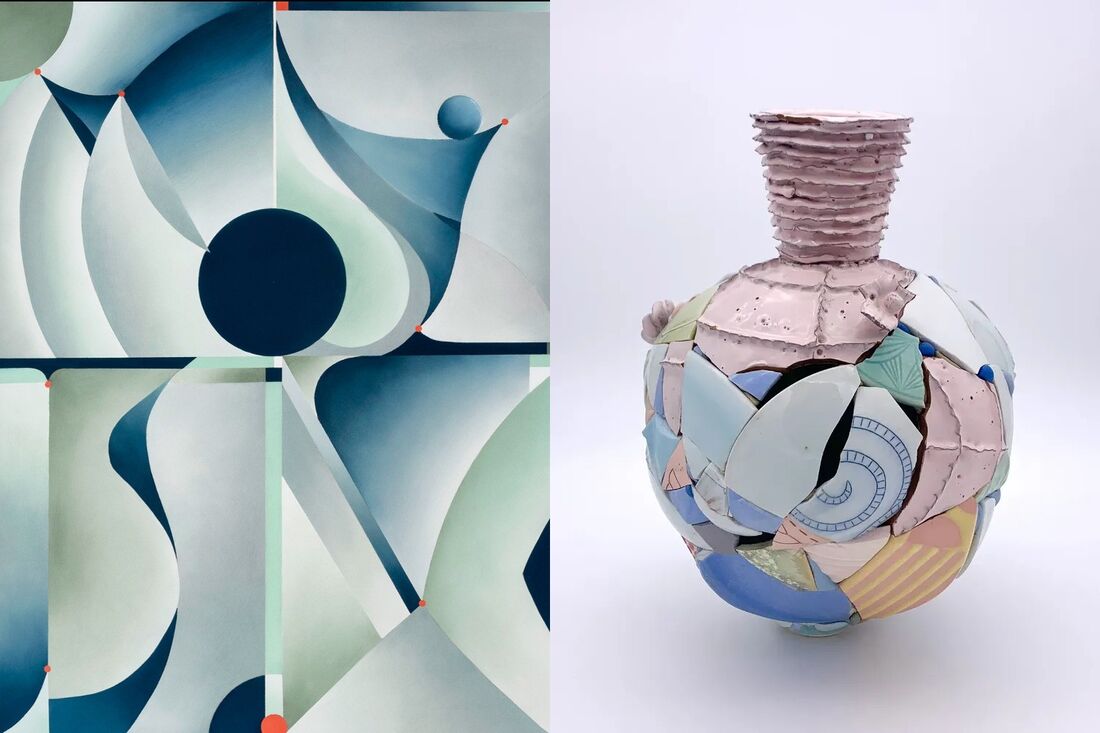
On this month-to-month roundup, we highlight 5 implausible exhibitions at small and rising galleries all over the world.
This unparalleled exhibition by Gopal Ghose traces the lifetime of an artist whose vibrant, emotive works left an indelible mark on Twentieth-century Bengali artwork. Flowers of Fireplace: The Life and Artwork of Gopal Ghose gives a uncommon complete view of Ghose’s evolution, from his early days as a founding member of the Calcutta collective to his alliance with the Progressive Artists Group of Bombay. Primarily on paper, these works are stuffed with colour and emotion, reflecting the resilience and great thing about the Bengal Famine and the political turmoil of medieval India.
The exhibition options a lot of Goss’s completed merchandise, sketches and notebooks, in addition to new archival analysis. Gauss favored small-scale however expressive landscapes and nonetheless lifes. A typical instance, Purple rose (c. 1960), challenges the everyday grandeur of artists of his technology and divulges his deep, eager eye and soul in fixed dialogue with the world round him.
Kusaka Reishi is difficult our belief in our personal perceptions. His summary geometric works, characterised by common and colourful shapes, encourage viewers to query the consolation and satisfaction that comes from watching the figures, colours and actions round us.
In Advancing Mysterious Views, these works function visible metaphors for the complexity and ambiguity of notion. Each bit within the sequence is a meditative journey, urging observers to look past the apparent and rethink the reliability of their gaze.Works akin to Line 47 (2010) is paying homage to Agnes Martin’s “Grid” sequence, through which the shape serves as a contemplative machine for each artist and viewer.
His work—likened to a Japanese Zen backyard on this exhibition at Yukiko Nakajima Gallery—is about perceiving the imperceptible, discovering motion in stillness, discerning the undefined in empty area follow. Kusaka’s “Diamond” sequence manipulates area and type, inviting the viewer to take part in an illusory portray, the place the attention is guided to seek out the focus.
Lee Simmonds approaches his work by prioritizing the materiality of paint. He studied the motion of colour fairly than using formal or inflexible strategies. The title of his third exhibition with Kristin Hjellegjerde Gallery, Kaleidoscope, not solely displays a playful and exploratory method, but additionally emphasizes how mild and motion alter notion.
Symonds’ technique was largely intuitive, starting with a fast software of paint to the canvas, then permitting it to dry earlier than revisiting it to determine the composition that had emerged. Typically he makes use of stencils so as to add layers to his works, which frequently oscillate between figurative and summary kinds. As well as, Symonds developed strategies to mimic the kaleidoscope—a instrument initially conceived for locating new patterns in materials.
exist lounge (2023), the foreground seems to mix into the background, demonstrating how clear pictures dissolve into summary kinds. The work additionally showcases Symonds’ expertise for mixing the mundane and the implausible.
Chase Travaille lives and works in Little Rock, Arkansas, specializing within the artwork of assemblage. His method, impressed by the “beautiful corpse” method conceived by the Surrealists, entails combining disparate parts to type cohesive but sudden works – from paper collages constructed from comedian ebook pages to ceramics Sculptures constructed from fragments.
Travaille’s first solo exhibition with LaiSun Keane, aptly titled “Beautiful Corpses,” showcases the whole thing of his follow. Travaille’s recycled ceramics are on the coronary heart of the exhibition, together with colourful iterations akin to Creatures of Swamp Creek (2022), or extra muted works akin to season of the witch (2022). The works had been conceived throughout a residency in Montana, the place the artist experimented with strategies of making ceramic sculptures with out the necessity for a kiln. There he developed this regenerative method to create sculptures that replicate narratives of neighborhood, energy and renewal.
In Pastels on Paper, Austrian artist Anita Schmid combines heat and funky tones to create stark contrasts in every of her summary work. Her work, exhibited on-line by commonsensegallery.artwork in Vienna, is characterised by a eager use of geometric shapes that create visible rigidity for the viewer. This intentional juxtaposition of shapes and colours achieves a dynamic stability, evoking a sense of vitality transference. Her type attracts inspiration from artists akin to Hilma af Klint, Emma Kunz and Loie Hollowell, fusing conventional geometric abstraction with a up to date sensibility.
Schmid’s inspiration is usually rooted within the pure world, and she or he finds geometric patterns in landscapes.exist As above and beneath (2023), Schmid layers contrasting tones to type sensual, charming pictures. Like her oeuvre, these work function sharp geometric cuts and are animated by colour and motion.

